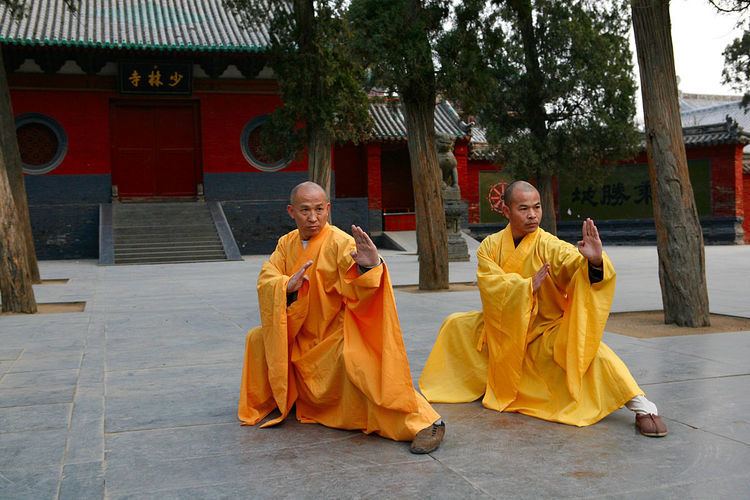Chinese 擒拿 Hanyu Pinyin | Literal meaning press and grasp Wade–Giles ch'in na | |
 | ||
Chin na or Qinna (擒拿) is the set of joint lock techniques used in the Chinese martial arts to control or lock an opponent's joints or muscles/tendons so he cannot move, thus neutralizing the opponent's fighting ability. Chin na su (Chinese: 術; pinyin: shù meaning technique) literally translates as technique of catching and locking in Chinese. Some schools simply use the word na to describe the techniques. Chin Na features both standing and ground based grappling techniques.
Some Chinese martial arts instructors focus more on their Chin Na techniques than others. This is one of the many reasons why the Chin Na of one school may differ from that of another. All martial arts contain Chin Na techniques in some degree. The southern Chinese martial arts have more developed Chin Na techniques than northern Chinese martial systems. The southern martial arts have much more prevalent reliance on hand techniques which causes the practitioner to be in closer range to their opponent. There are over 700 Chin Na traditional techniques found in all martial arts. In the Non-Temple White Crane style there are 150-200 Chin Na techniques alone. Along with Fujian White Crane, styles such as Northern Eagle Claw (Ying Jow Pai) and Tiger Claw (Fu Jow Pai) have Chin Na as their martial focus and tend to rely on these advanced techniques.
There is no universally accepted systemized form of Chin Na. Instead, each school varies due to the instructor's training and/or personal preference of focus.
Techniques
While techniques of Chin Na are trained to some degree by most martial arts worldwide, many Chinese martial arts are famous for their specialization in such applications. Styles such as Eagle Claw (Yīng zhua quán 鷹爪拳), which includes 108 Chin Na techniques, Praying Mantis (Tánglángquán 螳螂拳), the Tiger Claw techniques of Hung Gar (洪家), and Shuai Jiao are well known examples.
Chin Na can generally be categorized (in Chinese) as:
- "Fen jin" or "zhua jin" (dividing the muscle/tendon, grabbing the muscle/tendon). Fen means "to divide", zhua is "to grab" and jin means "tendon, muscle, sinew". They refer to techniques which tear apart an opponent's muscles or tendons.
- "Cuo gu" (misplacing the bone). Cuo means "wrong, disorder" and gu means "bone". Cuo gu therefore refer to techniques which put bones in wrong positions and is usually applied specifically to joints.
- "Bi qi" (sealing the breath). Bi means "to close, seal or shut" and qi, or more specifically kong qi, meaning "air". "Bi qi" is the technique of preventing the opponent from inhaling. This differs from mere strangulation in that it may be applied not only to the windpipe directly but also to muscles surrounding the lungs, supposedly to shock the system into a contraction which impairs breathing.
- "Dian mai" or "dian xue" (sealing the vein/artery or acupressure cavity). Similar to the Cantonese dim mak, these are the technique of sealing or striking blood vessels and chi points.
- "Rou dao" or "rou shu dao" (soft techniques) which generally refers to the techniques deemed safe for sparring and/or training purposes.
Chin means to seize or trap, na means to lock or break, and while those actions are very often executed in that order (trap then lock), the actions can be performed distinctly in training and self-defense: A trap isn't always followed by a lock or break, and a lock or break is not necessarily set up by a trap.
There is quite a bit of overlap between Chin Na theory and technique with the branches of traditional Chinese medicine known as tui na (推拏) as well as the use of offensive and defensive qigong as an adjunct of Chin Na training in some styles.
